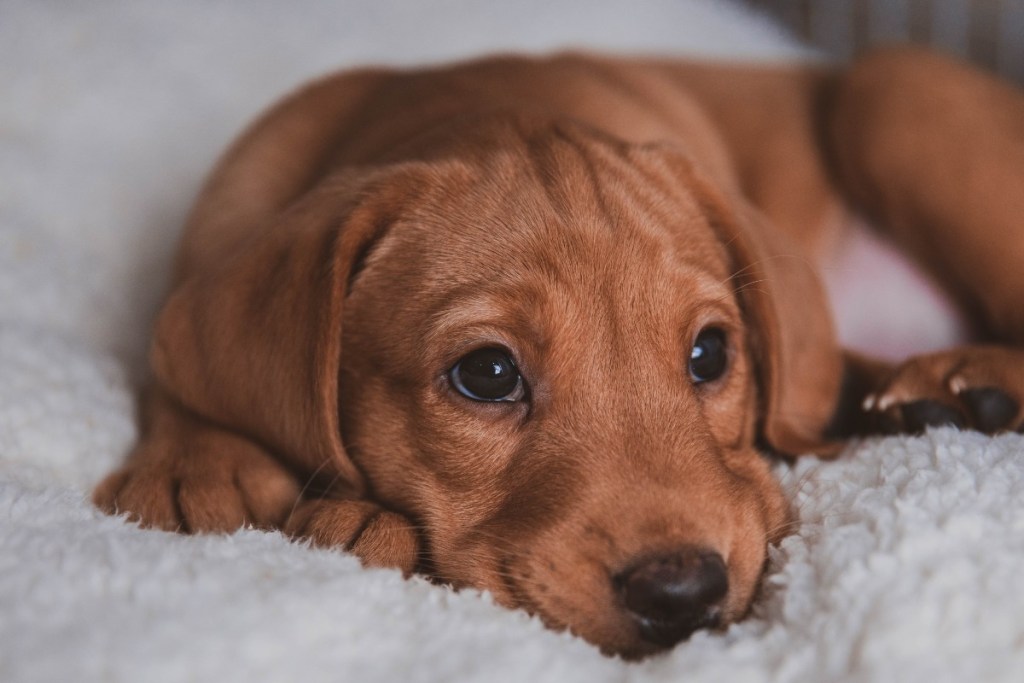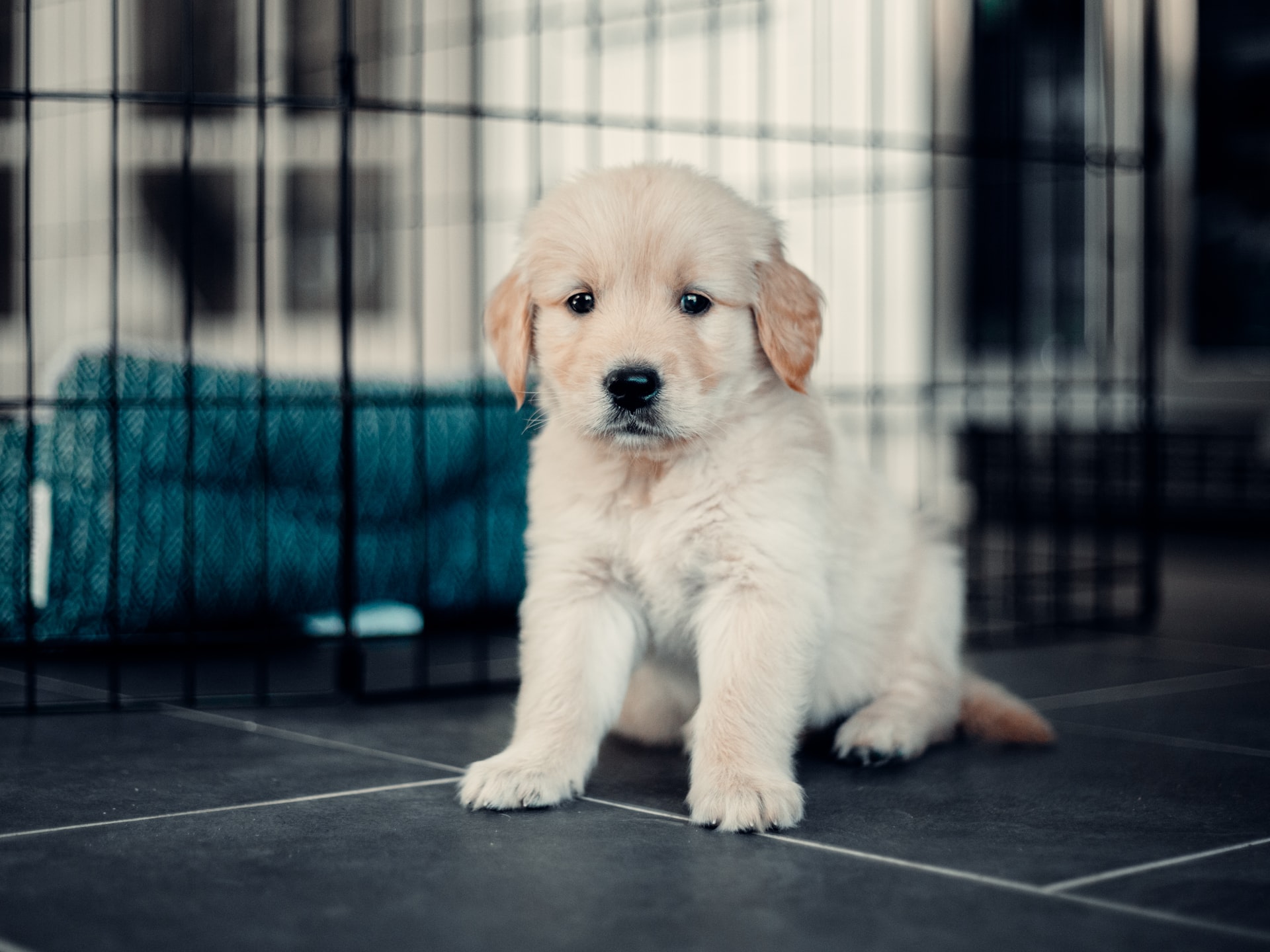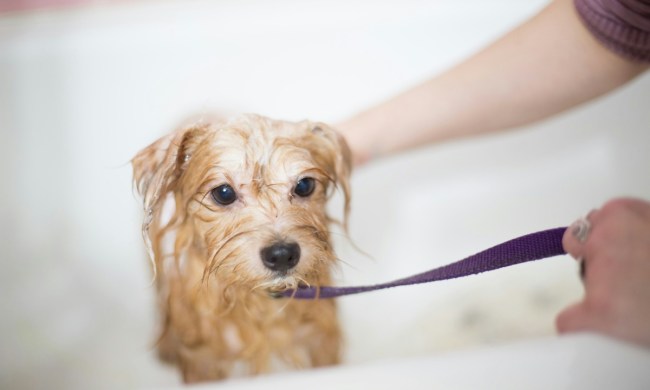
Getting a puppy is an exciting milestone. It’s fun to introduce the new little one to the world, watch them grow, and play and snuggle with them. If you recently got a Labrador retriever, you may be especially loving life right now.
According to the American Kennel Club, Labs are one of the most popular breeds in America, and for good reasons. They’re even-tempered pooches and generally great with people and other pets. Many love to play fetch, and others are glad to be your running buddy. However, they’re also happy to snuggle.
You have a long fun life ahead of you with your Labrador retriever puppy. Should that life include crate training? You may feel uncomfortable putting your fur baby in a crate — it’s a cage, isn’t it? Crate training a Lab puppy is actually a good idea. Here’s why and how to do it.

Are Labs easy to crate train?
You may have some pet-parent guilt about putting your fur baby in a crate. It seems like a small space, and you don’t want to lock them away. The good news is that Labs often make crate training easy on their parents. They’re quick on the uptake and eager to please.
They love making their humans happy, so they take to all kinds of training well, including crates. Every puppy is different, though. Your veterinarian or a trainer can help you through any troubles that may arise.

Is crate training good for Labradors?
Crate training a Lab puppy is one of the best ways you can help them thrive in their new home. Experts say your new pup will reap many benefits from having a crate, including:
Easier potty training. Housebreaking can be one of the tallest tasks new pet parents have to work on with their Lab puppies. Crate training makes it a little easier and less messy. Since dogs generally don’t like to urinate where they hang out and sleep, crate training can mitigate accidents.
Reduced stress. Labs tend to be adaptable, but a new home can be stressful for anyone. A crate is like your dog’s personal den where they can retreat when they feel stressed. It’s also a space they can have all to themselves to eat, sleep, or chew on a toy. Even social pets need to chill sometimes. Consider it a space for self-care, kind of like your bedroom may be for you.
Safer car rides. A crate is one of the safest spots for a pet in the car. Your Lab won’t be able to distract you. If you get into an accident, they’ll be more protected. Getting your dog used to a crate at home increases the likelihood they’ll be cool hanging out in one during road trips.

How to crate train a Lab puppy
Though Labs tend to take to training quickly, they still need some guidance from you. Here’s how to help your Labrador get used to their crate.
Step 1: Select the correct crate size for your puppy.
Labs will generally grow to weigh 55 to 80 pounds. However, they won’t be that big at first. You want a space your pet can move around in comfortably. They should be able to sit, lie down, stand, and turn. You also don’t want the crate to be too large.
The puppy may soil the space if they have enough room. Most crates will have height and weight specifications on them, and once you have that information, you can purchase one. If you don’t want to buy more than one crate, you may be able to get divider panels so your puppy can grow into the space.
Step 2: Make the crate comfy.
You probably made your bedroom into a comfortable spot for you to sleep at night. You’ll want to do the same for your pet. Make it a cozy hangout spot by putting some blankets or a bed in there. Toys keep it fun.
Step 3: Introduce the crate slowly.
You don’t want to force your pet into their crate. Plop it on the floor in an area where you’re hanging out so the dog doesn’t feel lonely, then let them explore.
Feeding your pet in their crate and putting treats in there will help them associate it with good things. If they’re hesitant, try putting the food outside the crate and then slowly inching it closer until it goes inside.
Step 4: Start slow.
You’ll also want to go slow in terms of how long you leave your Lab puppy in the crate. When your dog appears to be getting used to the crate, close the door and sit nearby for a few minutes. Then, open the door.
Step 5: Repeat this for a couple of days and slowly increase the number of minutes your dog stays in there.
Walk in and out of the room to get the dog comfortable being in the crate without you there. Don’t leave your dog in there all day. A puppy younger than 6 months old shouldn’t be in a crate for longer than 3 to 4 hours.
Final thoughts about crate training a Lab puppy
Like most dogs, Labrador retriever puppies tend to be easy to crate train. Taking on this process will give your dog a safe space all to themselves where they can hang out or de-stress. It also makes housebreaking and car rides easier and safer — so what are you waiting for?



